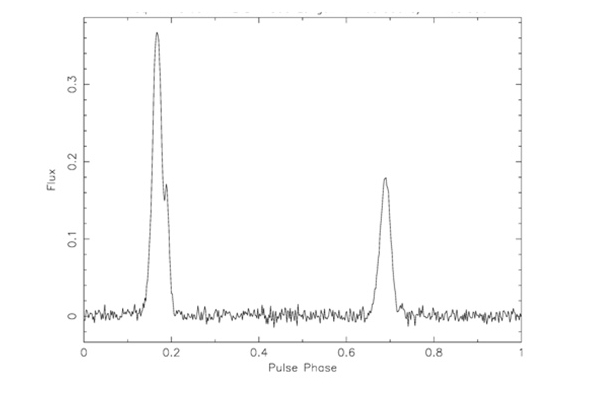The team led by professor LUO Jintao at NTSC made a progress in the development of the digital pulsar machine by realizing the coherent dedispersion mode. Using NTSC's 40-m Haoping radio telescope at the Luonan site, the pulsar machine developed by the team successfully obtained the fine structure of millisecond pulsar B1937+21's profile.
The pulsar machine utilizes the FPGA+GPU structure, including a 8-node GPU cluster which is capable to do real-time data processing on massive volume data. The realized bandwidth in the coherent mode is 800MHz, and the channel number is 1024. This pulsar machine has been proven to be with excellent pulsar timing ability from testing observations done in coherent mode. The pulsar machine reached the bandwidth of 1.6GHz in the lab test. The following research efforts will be on improving the bandwidth and channel number, and testing observations with higher bandwidth is also in the plan.
The digital pulsar machine plays a key role in the research of pulsar time scale. Radio signals from the pulsar suffer the effect of dispersion while traveling through the interstellar medium. The dispersion broadens the pulsar's profile and hence decreases the quality of observation. The coherent dedispersion method can remove the dispersion completely and recover the 'true' profile of the pulsar.

Profile of Millisecond Pulsar B1937+21, observed using NTSC's Digital Pulsar Machine (Image by NTSC)
 Print
Print